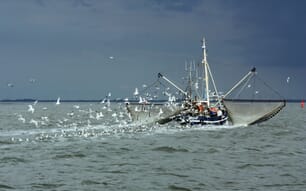“Increased hydropower generation and larger salmon stocks are not necessarily a contradiction in terms,” says senior scientist Atle Harby.
Harby leads the CEDREN research centre – one of Norway’s “national teams” in environmentally friendly energy, which is manned by scientists from SINTEF Energy, NTNU (Norwegian University of Science and Technology) and NINA (Norwegian Institute for Nature Research).
The centre has recently put the final touches to a unique guide describing what we need to do in practice to combine the ecological needs of the salmon while maintaining a high hydropower generation.
The handbook is a world first of its type. It was ready for distribution to users in September. The book is aimed at river managers, power utility companies and other interest groups.
Atle Harby has met many people who believe that salmon by definition will suffer by electric power generation in regulated rivers. So it is all the nicer for him to be able to tell them that we in many cases can have even more renewable power and more salmon at the same time.
“We can use new knowledge and new methods to increase salmon production without compromising power production in many of the regulated rivers. And this can be done using measures that don’t necessary require major investments.”
Important salmon rivers
“Can you promise both more salmon and more hydropower in all Norwegian regulated rivers?”
“That won’t be possible everywhere, but it is quite possible to obtain this in many important salmon rivers. In other rivers we will be able to produce more salmon while maintaining existing power generation. We believe that our conclusions will be valid for a good number of important highly regulated rivers. Of course, in some rivers this will not be possible and we have to choose between salmon and power.
“However, in some of the rivers in the last group it should be possible to extract more power while we maintain a sustainable salmon production. We hope that the handbook will be used to identify what will be possible in each individual river,” says Harby.
Ecological indicators
Senior scientist Torbjørn Forseth of NINA has led the project that is behind the handbook - an important aspect of CEDREN’s activities.
Forseth tells CEDREN’s newsletter that salmon is an important indicator species in rivers. If salmon are doing well, and reproduce and thrive as they should, then other aspects of the river’s ecological system are also probably functioning well.
Physical interventions and releases of water
The methodology described in the handbook is based on long-term research collaboration between NINA, NTNU, UNI Research, University of Oslo and SINTEF Energy Research. Some of the measures involved will require investment, while others do not (see fact-box).
The measures that do not require investment are based on the fact that inflow, water temperature, river bed structures and habitat conditions are all important for the salmon – and that these variables change over the year and from river to river.
According to CEDREN director Harby, therefore, it should be quite possible to take the salmon’s needs into account while saving water at the same time – by concentrating releases of water down the river during periods that are important for the salmon’s living conditions. In other words, to concentrate mitigation when it is most effective
The measures that do require investments include a wide range of measures, ranging from physical interventions to transfers of water from neighbouring rivers so that the salmon and the hydropower companies will have more water to share.
Computer simulations
CEDREN has also developed computer models based on its research results. These are used to simulate what will happen to the salmon stock when a regulated river is developed and environmentally friendly measures are put into effect.
Harby says that CEDREN scientists have used such tools to help the Sira-Kvina Electricity Company to draw up plans for new hydropower generation and environmental protection measures in the River Kvina in South-Norway.
According to the senior scientist, the simulations show that it would be possible to increase the amount of electricity generated by Tonstad Power Station on the River Sira by transferring water from the neighbouring River Kvina – while increasing the level of salmon production in the very same River Kvina.
Data from the River Orkla development
“How can you be sure that your model gives you reasonable estimates?”
“Because it is based on many years of knowledge development and practical experience from several rivers. An example of good environmental design is the River Orkla in Mid-Norway, which was regulated in the eighties. Although currently knowledge was not available at that time, many of the principles that you can find in our handbook were actually used in regulating the River Orkla – and the result was a very productive salmon population.”


